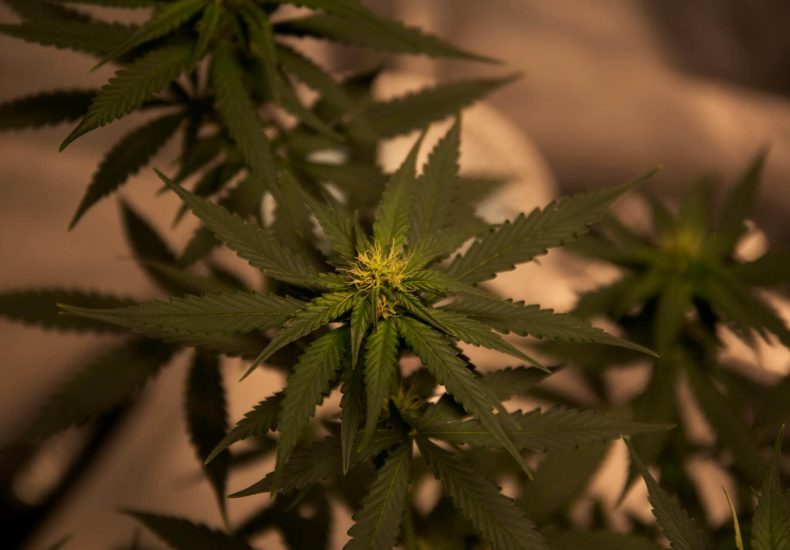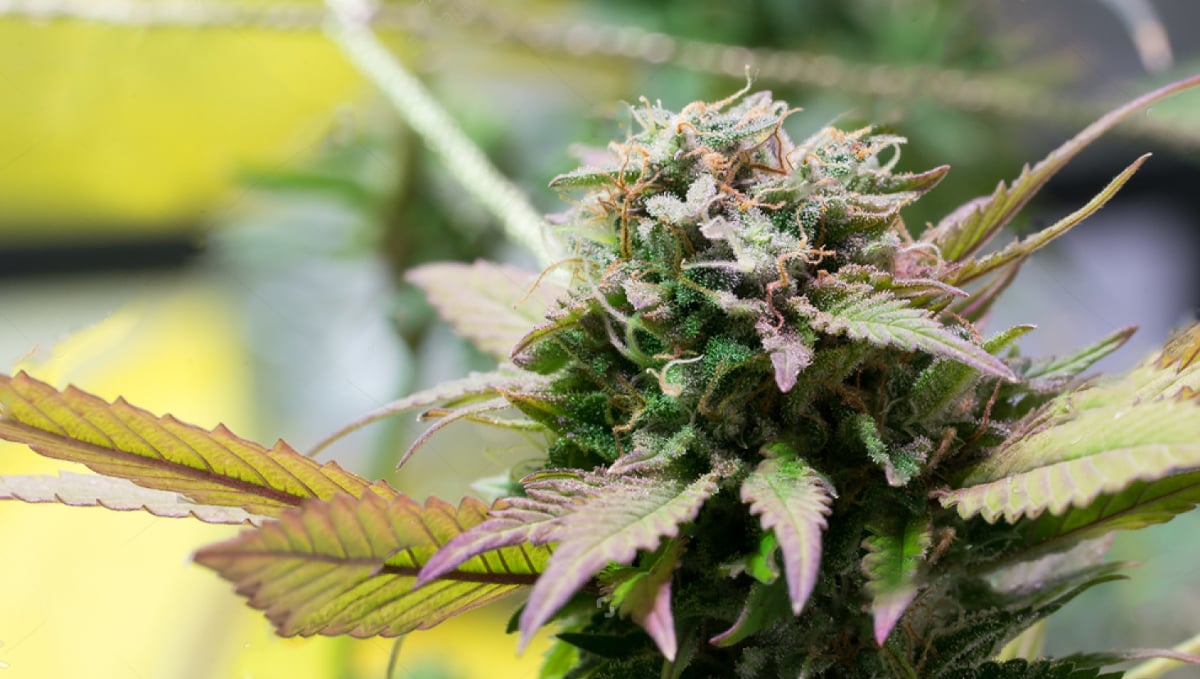 Cannabis
Cannabis
Table of Contents
The history of OG Kush is a great story that needs to be told. Many people want to know about the famous OG Kush cannabis strain. They wonder where it came from and why so many love it. The story of OG Kush begins in the 1960s, with its roots reaching deep into the soil of history and culture.
This strain has become a cornerstone in the world of cannabis, known for its unique taste and powerful effects.
OG Kush made its way from the Hindu Kush mountains to America, forever changing the marijuana scene. Our article will guide you through its journey from past to present, explaining how this iconic strain evolved over time.
From Afghan strains hitting Western shores to becoming a cultural icon in the 1990s, we’ve got you covered. Get ready to explore the history of OG Kush!

The Origins and History of OG Kush
Afghan strains were brought to the Western world, influencing the genetic heritage and history of OG Kush. The role of the Hippie Trail and the introduction of short-flowering indicas played a pivotal role in its development.
Afghan strains brought to the Western world
European hippies traveling the Hippie Trail in the 1960s and early 1970s played a crucial role in bringing Afghan strains of cannabis to the Western world. These travelers explored regions in Afghanistan where local farmers had cultivated unique landrace strains for centuries.
Eager to share their discoveries, they brought seeds back to Europe and North America.
These seeds introduced genetics that were previously unknown in the West, including traits like resilience, potency, and short flowering times. Cultivators quickly recognized the value of these characteristics for both medicinal and recreational purposes.
The introduction of Afghan strains marked a significant shift in cannabis cultivation practices outside their native lands, leading to groundbreaking hybrids such as OG Kush.
Role of the Hippie Trail
The Afghan strains brought to the Western world through the Hippie Trail played a pivotal role in shaping the evolution of cannabis strains. European hippies, seeking more than just recreational highs, embarked on journeys along this ancient trade route, delving into different cultures and unearthing traditional hash-making techniques.
This led to the introduction of potent landrace strains into Europe and America, setting the stage for crossbreeding and hybridization that would influence marijuana genetics in profound ways.
Navigating through rugged terrains and diverse landscapes, hippies not only transported exotic cannabis seeds but also shared cultivation knowledge with local communities. The intermingling of traditional Afghani hash plants with indigenous varieties laid the groundwork for what we now know as OG Kush – a strain known for its high THC content and distinctive terpene profile.
Introduction of short-flowering indicas
Short-flowering indicas entered the scene as a game-changer in cannabis cultivation. Breeders sought strains with shorter flowering times to navigate the complexities of prohibition-era cultivation.
These indica varieties, such as those from Afghanistan and Pakistan, tailored towards faster maturation, underpinning their appeal to both hobbyists and commercial growers looking to unlock the secrets of efficient production.
The role of these short-flowering indicas remains pivotal in modern CBD varieties, providing a robust foundation for breeding programs seeking more than just quick turnover. The impact goes beyond mere practicality, shaping the ever-changing world of weed by influencing not only flowering speed but also organoleptic profiles and effects.
The creation of Chemdawg
In the 1990s, Chemdawg originated from a fortunate bag seed found in a batch of high-quality cannabis. This strain quickly gained popularity for its distinct diesel-like aroma and potent effects.
It was later crossed with an old world Sativa and named OG Kush.
OG Kush is renowned for its unique flavor profile and has become a cornerstone strain in the cultivation of many modern hybrids, including various CBD varieties. Its influence on cannabis breeding extends to the creation of new sativa-dominant strains, demonstrating the enduring impact of Chemdawg’s inception.
The Evolution of OG Kush
OG Kush has undergone various transformations over the years, leading to the development of different strains and influencing other cannabis varieties. Interested in learning more?
Development of different strains
Breeders developed different strains of OG Kush by crossing parent plants to enhance specific characteristics. These new cultivars were tailored for diverse preferences and growing conditions, leading to the creation of variations such as Tahoe OG, SFV OG, and Fire OG.
Each strain offers unique flavors, aromas, and effects, catering to consumers’ varied tastes. The development of these distinct strains helped solidify the legacy of OG Kush in cannabis culture while expanding its presence in the ever-evolving world of marijuana cultivation.
The evolution gave rise to CBD varieties that appealed to users seeking more than just psychoactive effects from their cannabis consumption. This expansion not only widened the range of options available but also unlocked the secrets behind novel applications within the realm of medicinal cannabis.
The rise in popularity in the 1990s
During the 1990s, OG Kush surged in popularity within the cannabis community. Its unique flavor profile and potent effects contributed to its rapid rise as a favorite strain. This surge in demand led to increased cultivation and breeding, resulting in various phenotypes with distinct characteristics, further cementing its status as a staple in the realm of cannabis strains.
Breeders worked relentlessly to satisfy the growing interest by creating new hybrids and preserving the original genetic makeup of OG Kush. The legacy of OG Kush from this era continues to underpin many contemporary CBD varieties and hybrid strains that have become popular among enthusiasts.
Moving on to – The Meaning of “OG”.
Influence on other cannabis strains
OG Kush has significantly influenced the development of other cannabis strains. Breeders have crossed OG Kush with other varieties to enhance their genetic profiles, resulting in new and unique hybrid strains such as Headband and Bubba Kush.
The distinct earthy and pine aroma, as well as the potent psychoactive effects of OG Kush, have become sought after traits influencing the cultivation and breeding process within the industry.
Many breeders use OG Kush genetics to create high-quality CBD varieties that offer therapeutic benefits while preserving the strain’s signature flavors and aromas. As a result, OG Kush continues to shape the ever-evolving landscape of cannabis strains with its profound influence on genetic diversity and cannabinoid profiles.
The Meaning of “OG”
The interpretation of “OG” has sparked various theories and debates, leading to its enigmatic status among cannabis enthusiasts. Original Gangster is one popular interpretation, while others believe it stands for OverGrown.com, a key online platform in the prohibition era cultivation scene.
Various interpretations
The interpretation of “OG” has sparked various theories and debates within the cannabis community. The term may stand for “Original Gangster,” reflecting the strain’s roots in California’s hip-hop culture, or it could refer to OverGrown.com, an early online forum for cannabis growers and enthusiasts.
These different interpretations add to the mystique and allure of OG Kush, contributing to its status as a legendary strain with a rich and multifaceted history. The ongoing discussion surrounding the meaning of “OG” highlights the complexity and depth of this iconic variety.
Now, let’s delve into the continued legacy of OG Kush in modern-day cultivation practices.
Original Gangster vs. OverGrown.com
The interpretation of “OG” as Original Gangster or OverGrown.com has sparked debate within the cannabis community. While some believe it stands for “Original Gangster,” referencing its history and reputation, others argue that it refers to OverGrown.com, an early online platform for cannabis cultivation enthusiasts.
Regardless of the interpretation, the term “OG” has become synonymous with high-quality cannabis strains and represents a rich cultural and historical legacy that continues to thrive in today’s ever-evolving cannabis industry.
Moving on to the Continued Legacy of OG Kush.
The Continued Legacy of OG Kush
OG Kush’s continued legacy includes its cultivation tips, such as the best practices for growing in a prohibition-era setting and the development of CBD varieties. It also encompasses its organoleptic properties and effects that have contributed to its popularity in the cannabis industry.
Cultivation tips
To cultivate OG Kush, start with high-quality seeds or clones to ensure top-notch genetics. Provide a warm and sunny environment for the plant to thrive, such as a Mediterranean climate.
Use well-draining soil rich in nutrients and maintain careful watering practices to prevent mold growth. Throughout the flowering stage, keep an eye out for potential issues like pests and diseases.
Additionally, consider training techniques like topping or low-stress training to promote lateral growth and increase yields.
Organoleptic properties and effects
Transitioning from cultivation tips to organoleptic properties and effects, OG Kush offers a distinct terpene profile that contributes to its unique aroma and flavor. This cannabis strain is recognized for its earthy, pine, and citrus notes with an underlying hint of diesel.
These aromatic characteristics are complemented by the effects of OG Kush, which commonly include a euphoric head high combined with a relaxing body sensation. Users often report feeling uplifted and stress-free while experiencing relief from pain and insomnia.
The CBD variety of OG Kush further enhances its potential therapeutic benefits, making it sought after in the cannabis community.
Popularity in the cannabis industry
OG Kush has risen to become one of the most sought-after strains within the cannabis industry, captivating both recreational and medicinal users alike. Its widespread popularity is attributed to its potent effects and distinctive flavor profile, making it a staple choice for many consumers.
Furthermore, its versatility in cultivation has made it a favorite among growers, contributing significantly to its prevalence in the market.
Consumers’ growing interest in natural remedies and alternative medicine has propelled OG Kush into the spotlight, cementing its status as a top contender in the ever-evolving cannabis landscape.
The History of OG Kush
The rich history of OG Kush stems from the 1960s, influenced by Afghan strains and the Hippie Trail. The evolution of this strain led to various interpretations of its \”OG\” name, sparking interest and curiosity.
Moreover, practical cultivation tips and its continued relevance in the cannabis industry showcase its enduring legacy. Considering these insights, one may wonder how this historical journey can shape our approach to cannabis today.
By recognizing the significance of OG Kush’s origins and development, we can understand its impact on modern cultivation practices. As you navigate your own path in the ever-changing realm of cannabis, remember that OG Kush offers more than just a story – it provides essential lessons for cultivators seeking efficiency and success in their endeavors.


